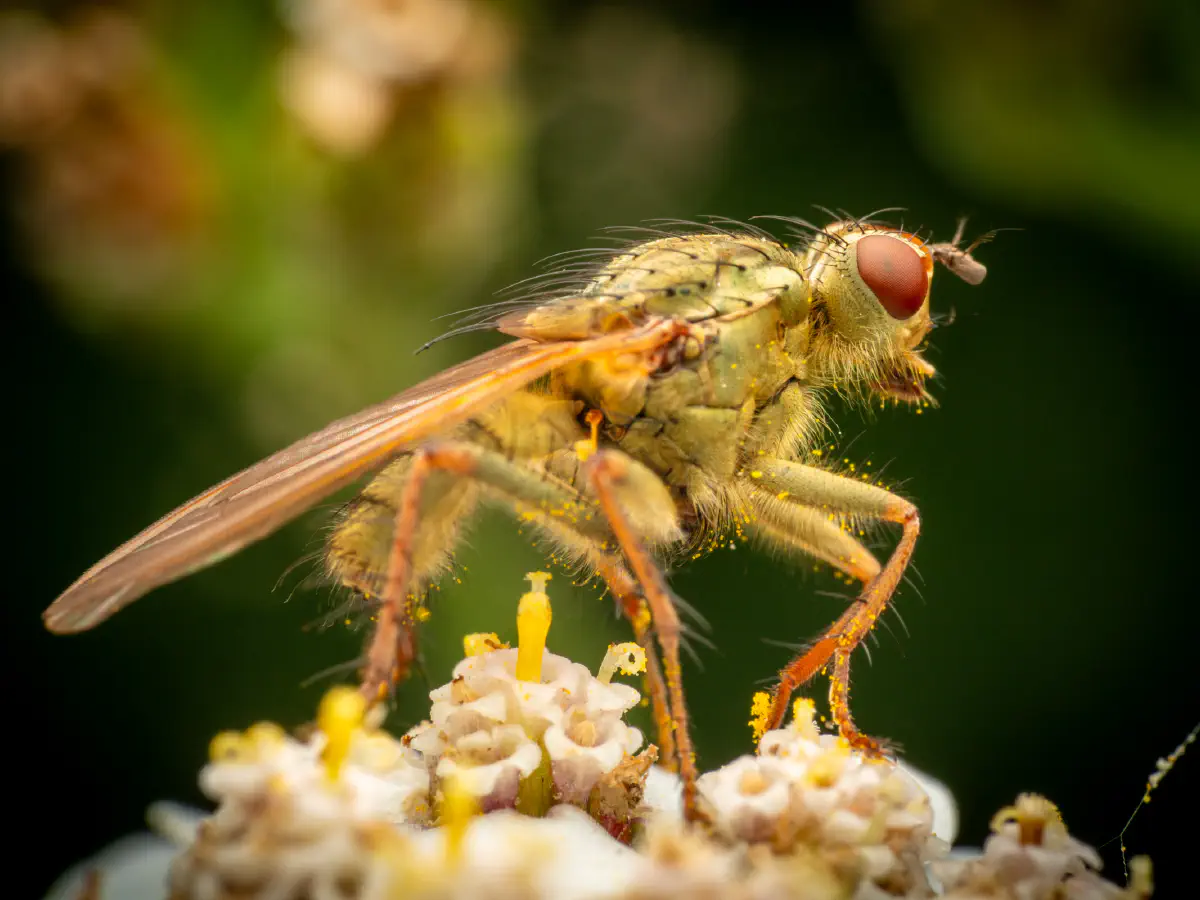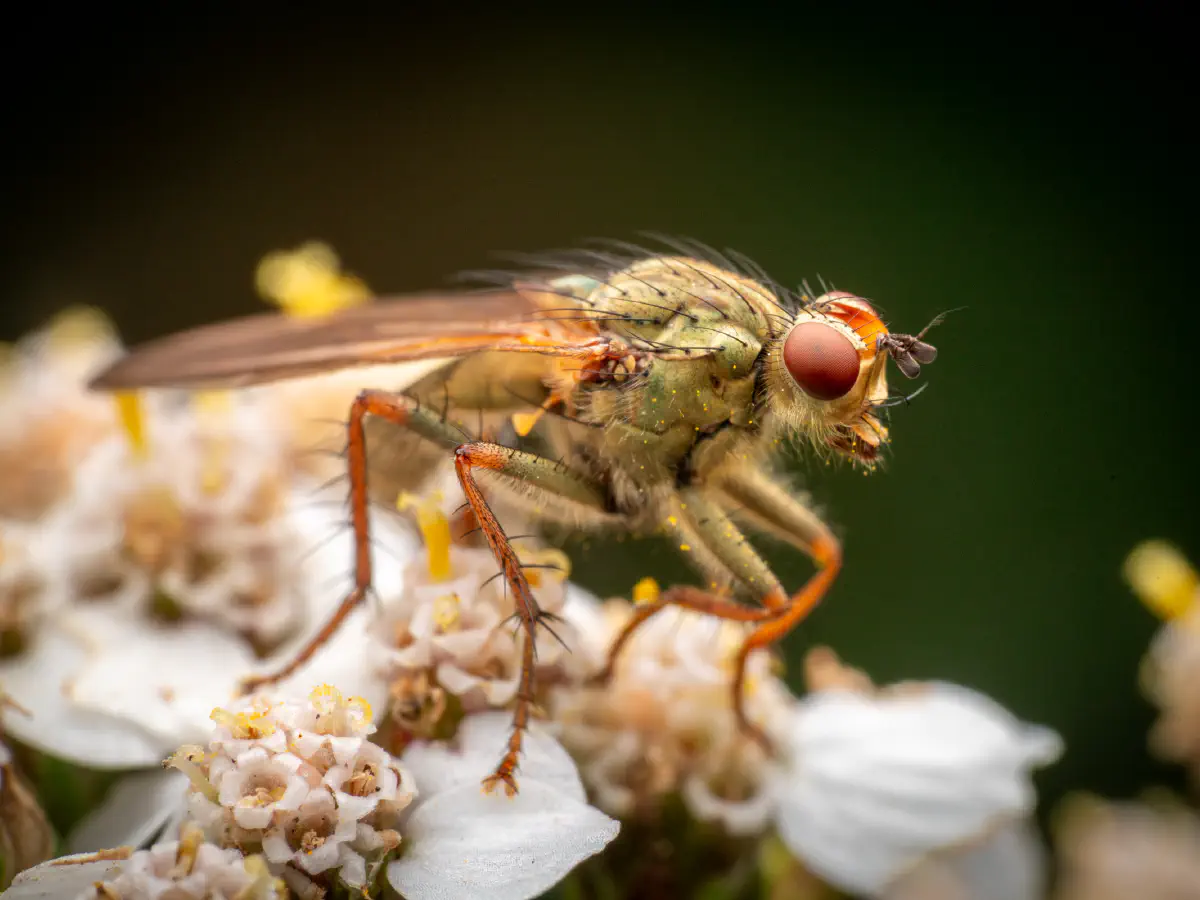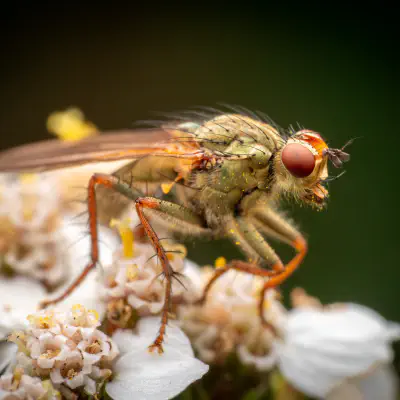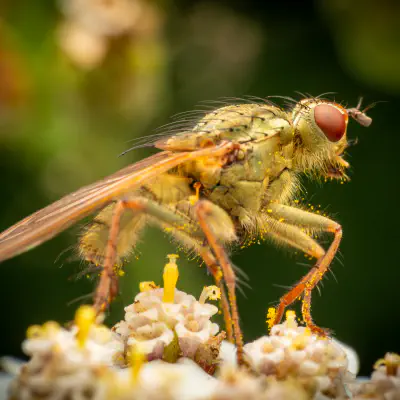Like Drosophila melanogaster, the yellow dung fly is an ideal model organism due to its short lifespan and susceptibility to various experimental manipulations. Initial interest in yellow dung flies came from their potential as biocontrol agents against pest flies around livestock. In the past 40 years alone, many studies have used S. stercoraria to research topics such as sperm competition, mating behavior, sexual conflict, reproductive physiology, thermal biology, and genetics. In particular, research on yellow
dung flies has contributed greatly to understanding of multiple mating systems and sperm competition.
Recently, S. stercoraria was approved as a standard required test species for ecotoxicological testing. This includes evaluating the residues of veterinary drugs in livestock dung. Yellow dung flies are a key part of decomposing waste in pastures, which is key to preventing the spread of endoparasites and returning nutrients to the soil. The species’ diet also serves to reduce the abundance of
pest flies. To test a chemical's toxicity, the chemical is mixed with bovine faeces, to which yellow dung fly eggs are added. Then, endpoints, such as sex and number of emerged adult flies, retardation of emergence, morphological change, and developmental rate, are measured and analyzed to determine toxicity. A great deal of research has been done on the effects of avermectins on populations of S. stercoraria. Avermectins are used to control endoparasites in livestock. The
resulting dung contains drug residues that can have unintentional adverse effects on yellow dung fly populations, such as increased mutations and decreased offspring viability. If the use of such drugs in agriculture is not carefully monitored, considerable economic losses could occur.





